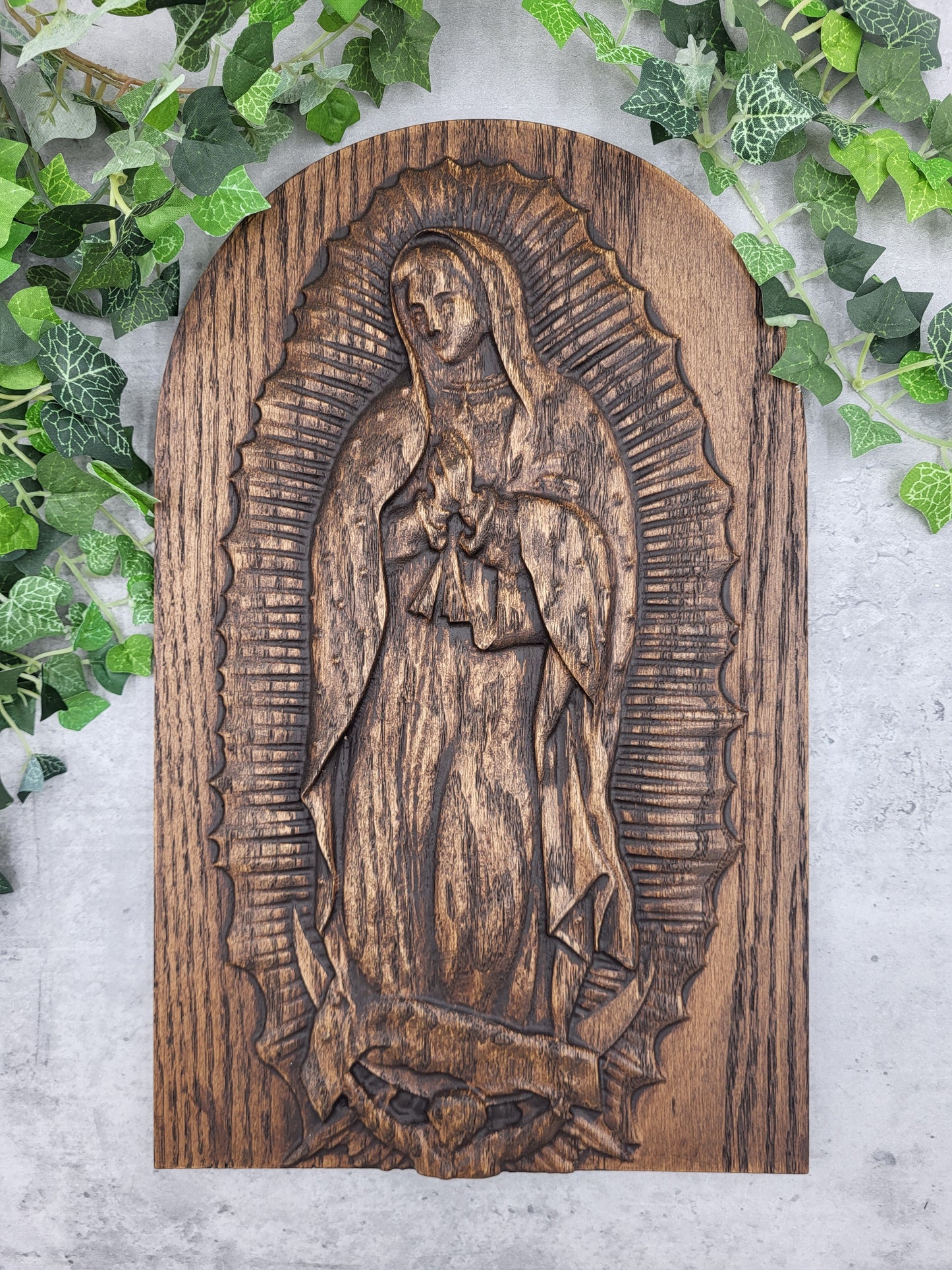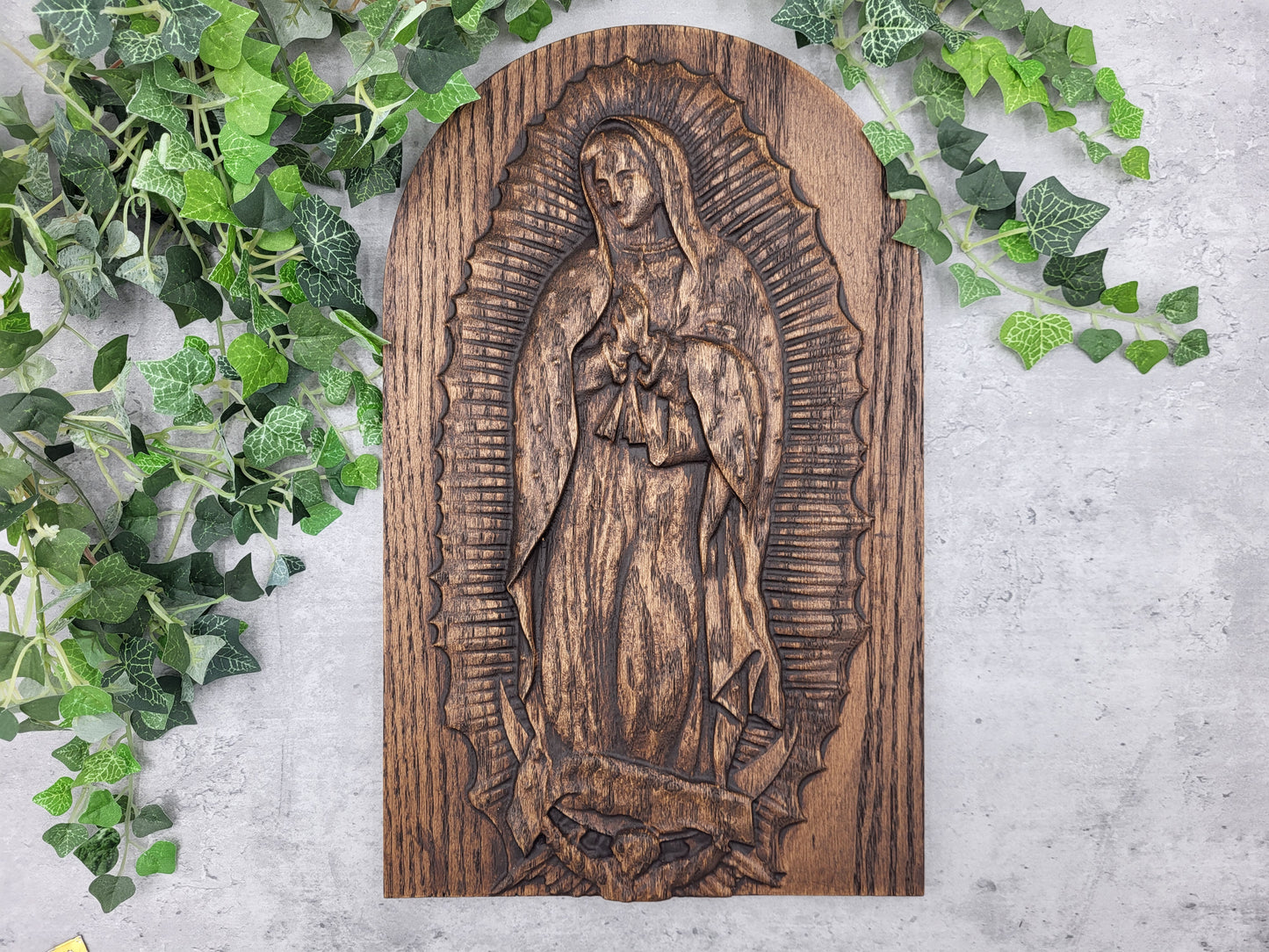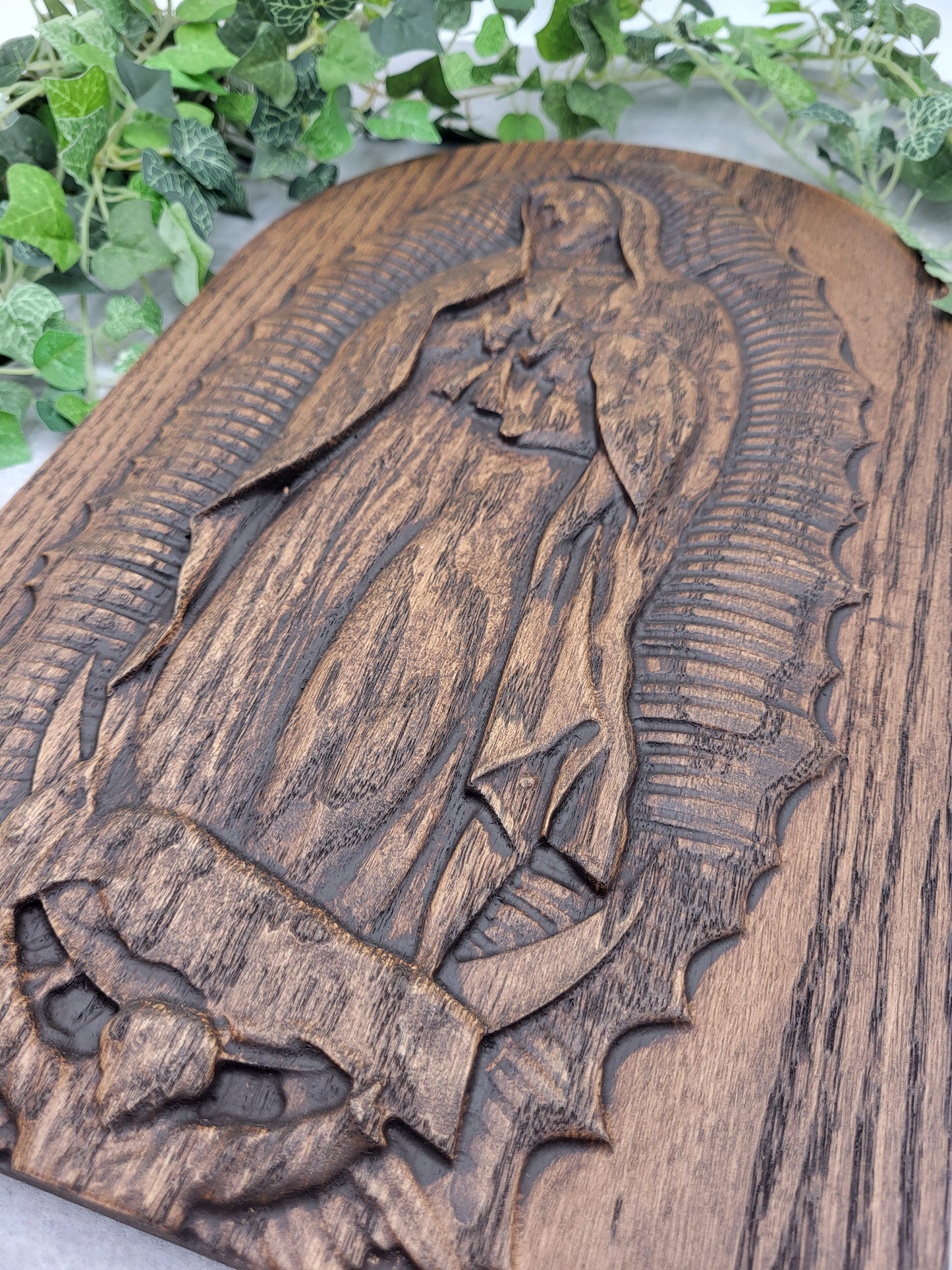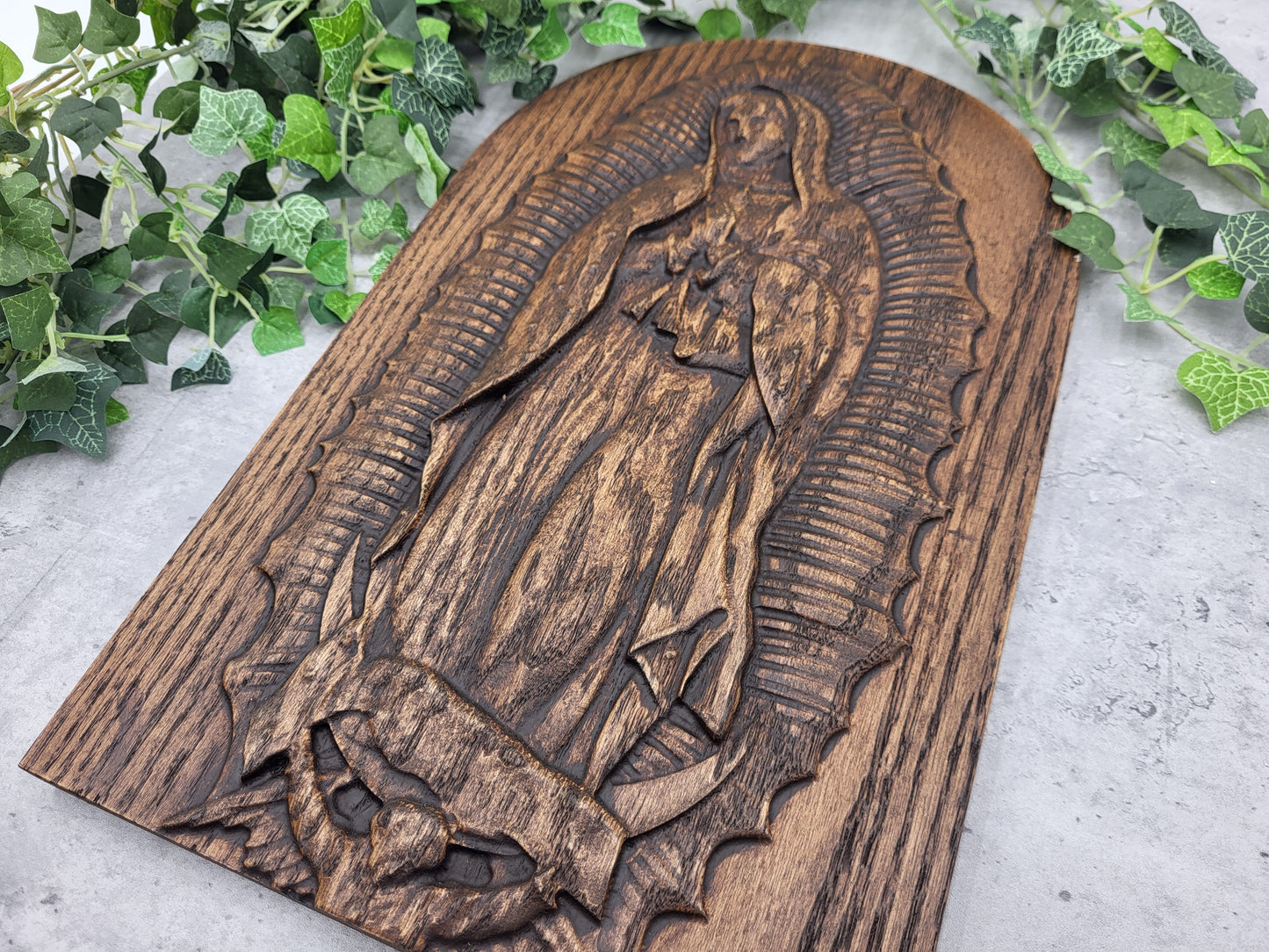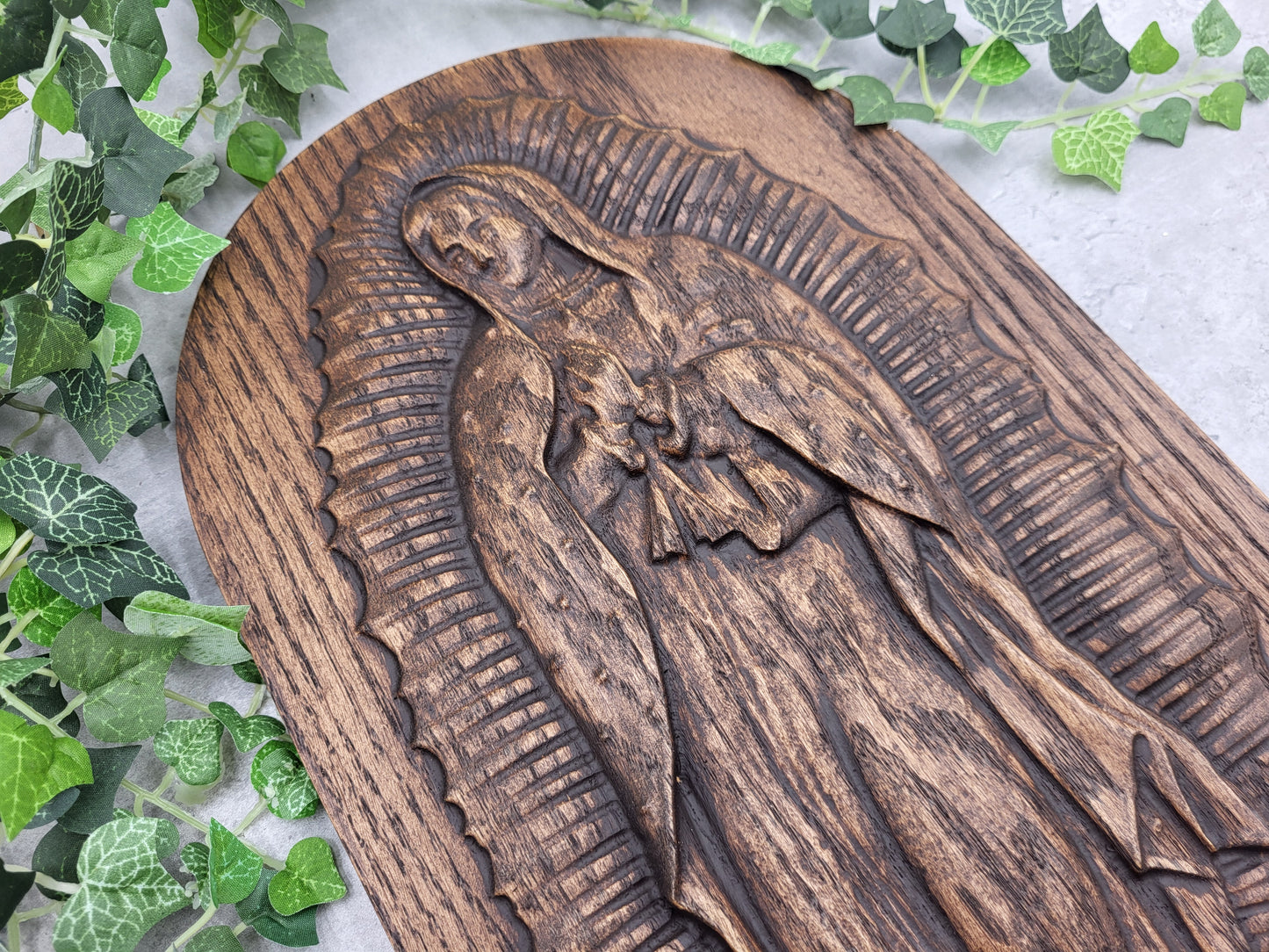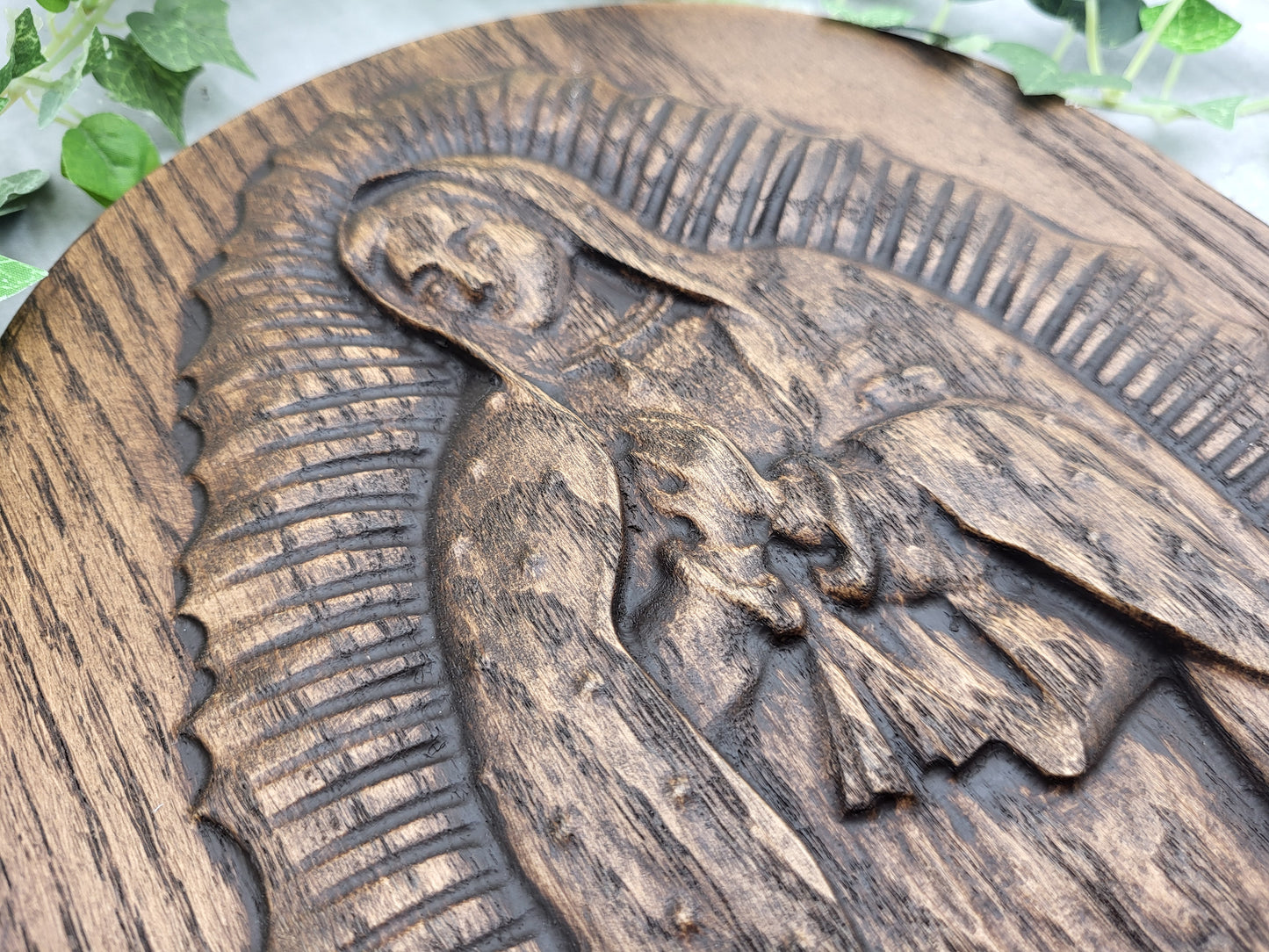Rough Cut Devotionals
Carved Our Lady of Guadalupe Icon
Carved Our Lady of Guadalupe Icon
Couldn't load pickup availability
Learn More About Our Carved Icons
What makes Us Unique
Our intricately carved designs are crafted using the finest quality materials sourced locally in Wisconsin, either from our own property or from nearby sawmills. We take great pride in our meticulous attention to detail and our commitment to supporting our nation and community. When you purchase one of our carved pieces, you are not only supporting a Catholic family business and sustainable sourcing, but also contributing to the growth of Catholic-owned businesses in the United States. Unlike many businesses, we do not buy and resell our pieces. Every item is 100% handcrafted by us, a dedicated husband and wife team, right here in Wisconsin. By choosing our products, you are investing in a tradition of artistry and supporting local craftsmanship. We are committed to delivering the highest quality products while upholding our values of faith, community, and sustainability.
The Ability to Customize
With our handcrafted products, we can fulfill your specific needs. Whether it's a particular wood species, custom size, unique shape, or design, we can bring your vision to life. In addition, we offer beautiful personalized engravings on the backside of our pieces, allowing you to create a completely custom and unique item. This not only adds sentimental value but also makes it a timeless heirloom that can be passed down for generations. Ideal for Sacramental occasions. Contact us to create your own custom piece today.
Learn About Our Lady's Story
History of Our Lady of Guadalupe
A poor Indian named Cuauhtlatohuac was baptized and given the name Juan Diego. He was a 57-year-old widower, and lived in a small village near Mexico City. On Saturday morning December 9, 1531, he was on his way to a nearby barrio to attend Mass in honor of Our Lady.
Juan was walking by a hill called Tepeyac when he heard beautiful music like the warbling of birds. A radiant cloud appeared, and within it stood an Indian maiden dressed like an Aztec princess. The lady spoke to him in his own language and sent him to the bishop of Mexico, a Franciscan named Juan de Zumarraga. The bishop was to build a chapel in the place where the lady appeared.
Eventually the bishop told Juan to have the lady give him a sign. About this same time Juan’s uncle became seriously ill. This led poor Juan to try to avoid the lady. Nevertheless the lady found Juan, assured him that his uncle would recover, and provided roses for Juan to carry to the bishop in his cape or tilma.
On December 12, when Juan Diego opened his tilma in the bishop’s presence, the roses fell to the ground, and the bishop sank to his knees. On the tilma where the roses had been appeared an image of Mary exactly as she had appeared at the hill of Tepeyac.
Share
